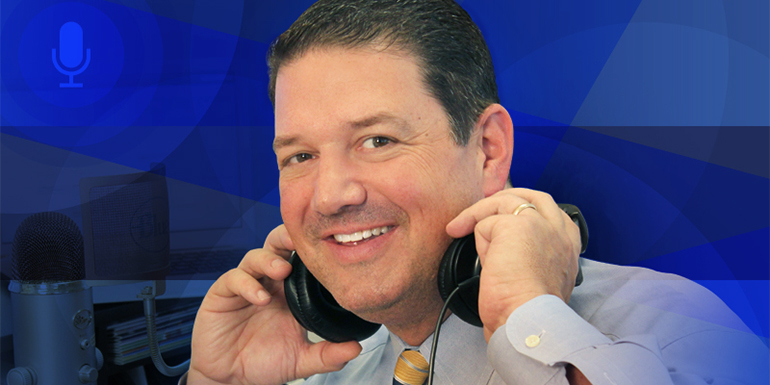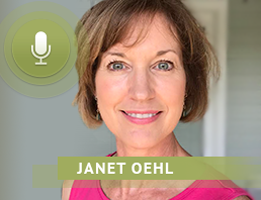
Janet Oehl, an activist with Onslow Protect Our Students, discusses the fight against comprehensive sex education that was being pushed in her local school system, and how the success of a small grassroots movement has developed into a statewide organization dedicated to a similar mission.

Thanks for joining us this week for Family Policy Matters. It’s easy these days to feel like our culture is often at odds with many of the values we, as Christians, hold dear. One of these areas where this is most evident, oftentimes, is in the arena of education. And when it comes to education, one of the most challenging topics can be the instruction presented to our kids about human sexuality.
Today, we are joined by Janet Oehl, a mom and military spouse whose life has been dedicated to serving others, whether as a pediatric physical therapist or as a volunteer in her church and her local pregnancy care centers. Most recently, Janet worked with Onslow Protect Our Students to educate the public about a comprehensive Sex Education curriculum that was being pushed in her local school system, and her efforts and efforts of those that she worked with really made a big difference. In fact, the success of that small grassroots movement has developed into a statewide organization that’s dedicated to a similar mission, which we will discuss today. Janet, welcome to Family Policy Matters. It’s great to have you with us on the show.
JANET OEHL: John, thank you so much, and thanks for the opportunity to speak with you, and for your leadership in North Carolina, and for really helping to expose what comprehensive sex-ed is.
JOHN RUSTIN: Janet, as we start our conversation, tell us a little bit about Onslow Protect Our Students. How did this group start and what is your mission?
JANET OEHL: Our mission is to really inform parents and the public, and to advocate for health education that promotes an approach to sex education called “Sexual Risk Avoidance Education,” which prevents teen pregnancy and reduces sexual transmitted infections. We got started: Onslow County schools had made a positive decision to have Sexual Risk Avoidance Education [former called Abstinence Education] provided in their schools through a local agency, a pregnancy care center. Through that center, a Sexual Risk Avoidance specialist was providing the education. This was back in 2013 and 2014, and it was kind of abruptly stopped in 2015 under some kind of obscure reason, so we were confused about that. Dr. Joe Werrell, who was the leader who started Protect Our Students—He says he had a eureka moment! This was in the Fall of 2015, when in a newspaper article, he saw that there was going to be a kickoff for a new community program called “North Carolina Youth Connected” through a group called SHIFT NC. It was inviting leaders in the community to meet the partners, and the big thing was the goal was to reduce the extremely high teen pregnancy rate in Onslow County. Dr. Werrell was really curious because he was the Board president of the pregnancy care center and he said, “Gosh, that’s really what we do” and we haven’t been invited to participate! So, he went to that meeting and they wanted to bring him in as part of the advisory group. But then they found out that they really didn’t have any decision-making ability with regard to what was going to be presented to the children. So, he gathered some folks together and we began to do some research, and what we found out was what SHIFT was, and what Comprehensive Sex Ed was, and we realized that we wanted to stop it.
JOHN RUSTIN: We’ll get into some of the details about the difference between Sexual Risk Reduction and Sexual Risk Avoidance and the curriculum and the proposals that are out there. But let’s take a little bit of a step back and talk about the state as a whole. How does sexuality education work in North Carolina? Does every school district use the same curriculum or do all 115 local school systems get to choose for themselves what kind of curriculum they teach?
JANET OEHL: No, it is not the same in every school district and really that’s a good thing. The school district can choose what curriculum and which approach to take. What supports that is our law, which is our General Statute, and also a clarifying law called the “Healthy Youth Act” or HB88 and the language in our law strongly supports Sexual Risk Avoidance. In fact, I’ll quote it: “Instruction must teach that abstinence from sexual activity outside of marriage is the expected standard for all school-age children,” and that, “A mutually faithful monogamous heterosexual relationship in the context of marriage is the best lifelong means of avoiding STDs including HIV and AIDS.
JOHN RUSTIN: And something our listeners may not be aware of is that law was actually enacted in the 1995-1996 session of the North Carolina General Assembly, and actually served as the model for the federal abstinence law, which was passed soon thereafter. So we’ve had this statute in place for well over 20 years in North Carolina. Janet, in your opinion, what role in this process should parents have in teaching their children about these topics, and do you think our current law supports parents or works against them?
JANET OEHL: Our law states that each school district must make available all the materials being presented to the children under this area of instruction for 60 days prior to being presented in the classroom. Also, that if the parent reviews the materials they may opt out if they disagree with what they see. I would like to speak directly to parents and guardians. After having reviewed several curricula, Comprehensive Sex Ed curricula, and compared them with more of a Risk Avoidance approach to sex ed, I must say that we can no longer stand back and just let the schools choose. We need to be aware of what they’re teaching and then we…. Because parents are the best, the first and the best person to decide when their child is ready for this information, and what to discuss about this really most important subject of human sexuality. Parents deserved to be informed, and they deserve to have easy access to view the materials. And then if they don’t like what they see, they deserve a choice. But, usually right now, and unfortunately, this means opting out of sex ed. Honestly in spite of the law, what we’re finding out is that most parents and citizens are unaware of the actual materials or the videos, the PowerPoints, that are being presented to the children. For instance, on an opt-out form that comes home for the high schoolers in my county, it’s very vague information and the schools will list what the state standards are, and most people can agree on the state standards because they’re very generalized, but when it comes down to what’s being put in front of the children’s eyes, it can vary widely. I do have some recommendations for parents: Certainly, go and view the sex ed materials. It will be worth your time. Learn about this topic and really develop what your belief is, and don’t be afraid to talk to your children about it. They won’t want to talk about it, but you have to. Studies show that parents are the most influential consideration for teens when they’re deciding to have sex or not. It’s what was presented by their parents and guardians.
JOHN RUSTIN: Janet, let’s talk a little bit about the primary differences between Comprehensive Sex Education, which, as you’ve said, is referred to now as Sexual Risk Reduction, versus abstinence education, or Sexual Risk Avoidance? I do want parents to understand generally what the differences are between these approaches.
JANET OEHL: Really, the primary difference in the two approaches is how they view teens. The Sexual Risk Avoidance approach, which Comprehensive Sex Ed proponents would want to put us in a box and say it is “just abstinence” or “just say no” and expect the kids to avoid sexual experimentation. That couldn’t be further from the truth. Sexual Risk Avoidance education is really a holistic approach that considers the whole teen, the whole child, and addresses not only physical risk, but the emotional risk involved in sexual experimentation. It is science based with the goal of achieving optimal health, not just reducing the risks of teen sex. Sexual Risk Avoidance education uses a public health model known as “Primary Prevention” and this is the same thing used [to combat] underage drinking and smoking among teens, and it’s totally appropriate to use for the risk behavior of teen sex. Some people might be surprised to hear that Sexual Risk Avoidance education does share medically accurate education on contraception, but always within the broader conversation. Conversely, the Sexual Risk Reduction approach really has a view of teens that assumes they can’t or won’t avoid sexual experimentation, which is, in my mind, very demeaning to teens, because statistics show during the last 25 years that the CDC has kept statistics, the rate of teen sex has actually gone down and down. So, the Sexual Risk Reduction approach seems to be ignoring those statistics and they assume teens can’t or won’t avoid sexual experimentation. So, most of their time is spent reducing the risk of teen sex, the physical risk. So, they focus on demonstrating the various contraception methods. They actually teach how to give consent to sexual activity and negotiation skills for using contraception. Sexual Risk Reduction is the secondary prevention. Remember, I said the primary prevention is the risk avoidance approach. Risk reduction is secondary prevention. So, it’s primarily focused on increasing contraception in teens, which really essentially normalizes teen sex.
JOHN RUSTIN: Thanks for that explanation. That’s really helpful in understanding those approaches. Janet, as we close, direct our listeners to some helpful resources on line, and also to North Carolina Protect our Students.
JANET OEHL: Our website is a work in progress, so keep going back for updates. I’m going to give our website and them I’m going to give a couple of other national websites that are really good. Our website for North Carolina Protect our Students is Northcarolinapos.com There’s a link to the email address at the bottom of the main page. And then another excellent website is weascend.org. That shows everything about what sexual risk avoidance is. It has 25 research studies showing significant behavioral changes to improve outcomes. And then there’s another website called sexedreport.org and that shows the failure of Comprehensive Sex Ed to achieve it’s stated goals in U.S. public schools.
JOHN RUSTIN: Let me just repeat your website again for our listeners, that’s northcarolinapos.com and then, of course, we’ve had guests on the show from ASCEND which is a national group that does great work in this arena, and we’re so appreciative of them as well. But Janet Oehl I want to thank you so much for being with us on Family Policy Matters, for the great work that you and others have done locally there in Onslow County that has served as an example for other communities across the state who are dealing with similar issues in this whole arena of human sexuality and how that is presented to our students in our school systems. Thank you so much. We are so grateful for all that you do and for taking time out of your schedule to be with us on Family Policy Matters.
– END –